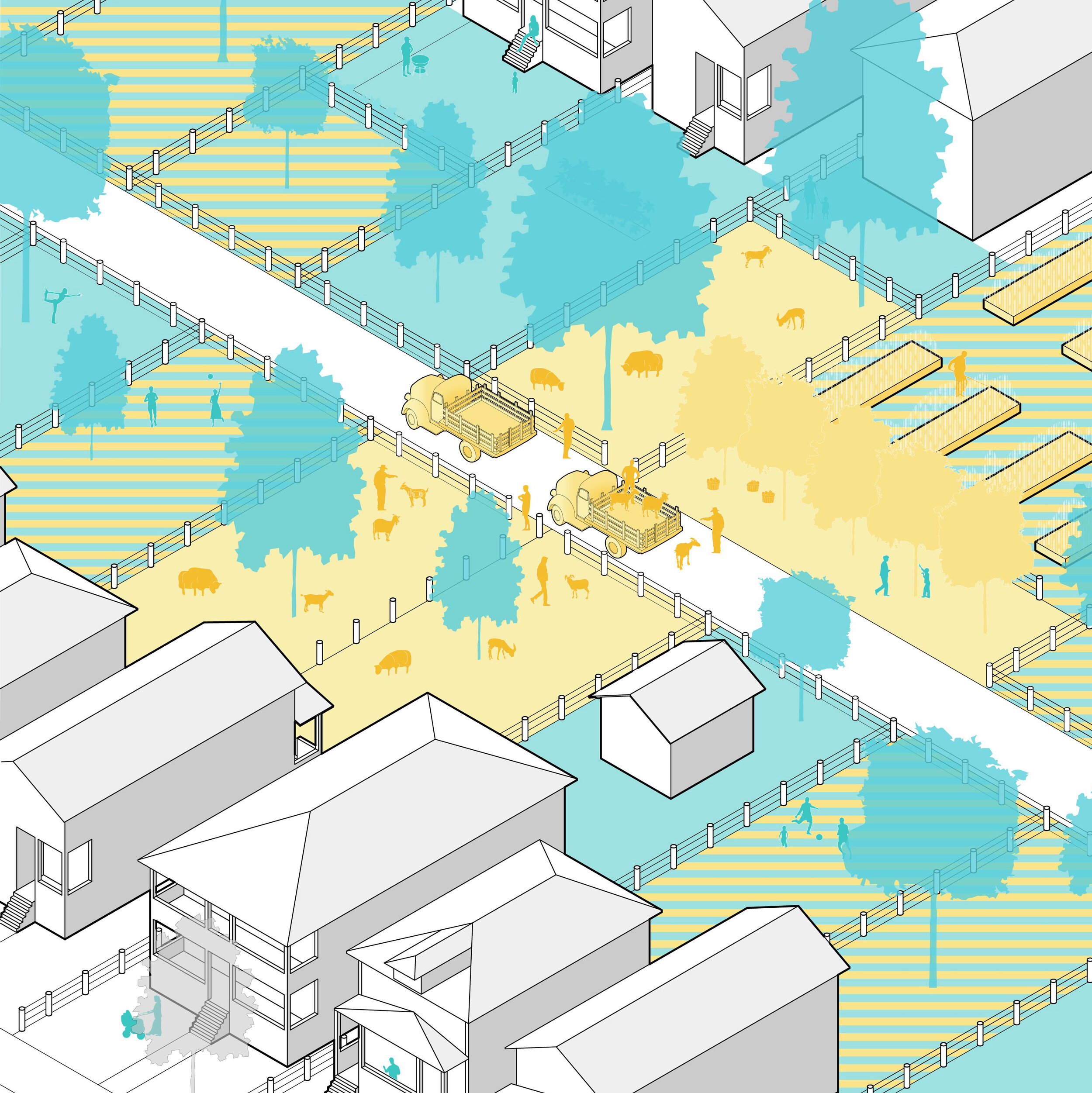
PRIVATE BACKYARDS WITH ROTATIONAL GRAZING
SPECULATIVE PROTOTYPE
Columbus, Ohio
2010
Jonathan Grubb, from the Cultivating Columbus LeFevre Research Studio, taught by Brian Holland, Knowlton School of Architecture, The Ohio State University
Cultivating Columbus
Piggybacking Tactic
Share a Resource to Multiply Use
BACKYARD ROTATIONAL GRAZING, a speculative proposal developed as part of the author’s research with architecture students in a graduate research studio, seeks to address the potential of use-multiplication in piggybacking. The proposal leverages the community gardening model to offer up a participatory form of community-supported agriculture built around the expanded infrastructural potential of residential backyards and service alleys. While traditional grazing schemes permit livestock to range freely over large sprawling pastures, Management Intensive Rotational Grazing is a system that deploys movable fencing to gather livestock together into small paddocks for a short period of intensive grazing. The subdivision of an otherwise wide-open pasture into small, short-term grazing parcels corresponds well with the pre-parceled landscapes of most residential subdivisions.
In this proposal, residents participating in a local CSA program offer their backyards as part-time rotational grazing paddocks, thus enabling their private outdoor space to double as productive pasture for several days each month. Small-scale livestock (e.g., goats and sheep) are herded by a group of entrepreneurial urban ranchers between participating properties through existing back alleys. A simple system of retractable property fences allows for paddock sizes to be changed according to the number of animals and the available sizes of adjoining properties. In return for their participation, residents receive a small monthly portion of milk, cheese, meat, or wool—and the opportunity to observe and interact with farm animals in an urban setting.


